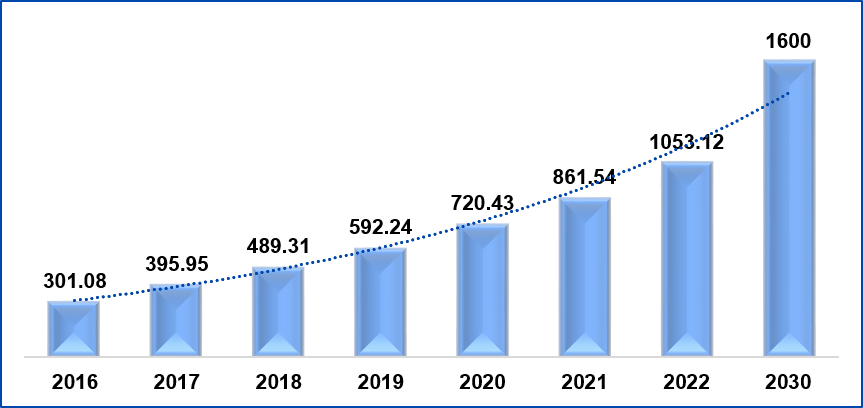views
With the rapid increase in the world’s population, meeting the need for electricity has been a major challenge and is mostly met by fossil fuels. Although these fossil fuels have many upsides, there are some considerable downsides as well, including increased greenhouse gas emissions, droughts, heat waves, rising sea levels, and more focus on renewable energy sources like solar, wind, hydroelectric, and bioenergy could be one of the sustainable ways. The article sheds light on the end-of-life management of solar panels or solar panel recycling below.

Figure 1: Solar PV Accumulative Installation in GW
The renewable energy industry shows a 9.1% spike in electricity production, with PV and wind as major contributors (>90%). IRENA states that solar PV panels, the top renewable source, meet nearly 60% of present electricity demand and are expected to surpass 1600 GW by 2030. E-waste of PV Panels.
Need For Solar Panel Recycling
Considering that the average lifespan of a standard solar panel is 30 years, it is not so distant future (next 10 years) that the previously installed solar panels will come down and accumulate. If we do not find an efficient way to deal with this, we might have to face a very huge problem. Further recycling/repurposing of old solar panels has the potential to unlock a huge, invaluable stock of raw materials soon. As per IRENA stats, the old PV panel recycling market will be worth $15 billion by 2050.
Regulatory Policies
Solar PV panels may contain toxic substances, and mismanaging about 60 million tons of this waste can cause serious eco-toxicity. Governments worldwide have implemented environmental management strategies to address the issue, including EPR and product stewardship schemes. Following are the regulations of some prominent jurisdictions:
Europe:
The handling of e-waste, such as PV panels, has been implemented in the updated version (2012/19/EU) of the Waste Electrical and Electronic Equipment (WEEE) Directive in 2012.
The European Union has mandated the EPR and encourages companies to provide funds to treat e-waste. Currently, 90% of this waste is covered by B2C regulations, which will likely be replaced by B2B regulations due to their rapid growth.
China:
PV waste management centralized specialized policies, rules, and regulations are proposed by China’s National High-tech R&D Programme.
China started managing 10 MW of crystalline solar PV panels in January 2023, highlighting its spike in awareness of solar waste management.
Also read the article on future of AI in waste management
USA:
USA passed Senate Bills 489 & 5939 to address PV waste by establishing recycling programs and providing tax benefits. Solar Energy Industries Association (SEIA) supervised a nationwide PV recycling program in 2016. First Solar, a US-based manufacturer, has installed recycling centers worldwide.
India:
On Nov 2, 2022, a specific set of guidelines was established for the solar sector as per the E-waste Management Rules 2022. As per this, the Central Pollution Control Board (CPCB) has to make and issue guidelines and SOPs for e-waste management, including solar PV panels.
Read the in-depth analysis and future outlook in the following article- solar panel recycling management






















Comments
0 comment